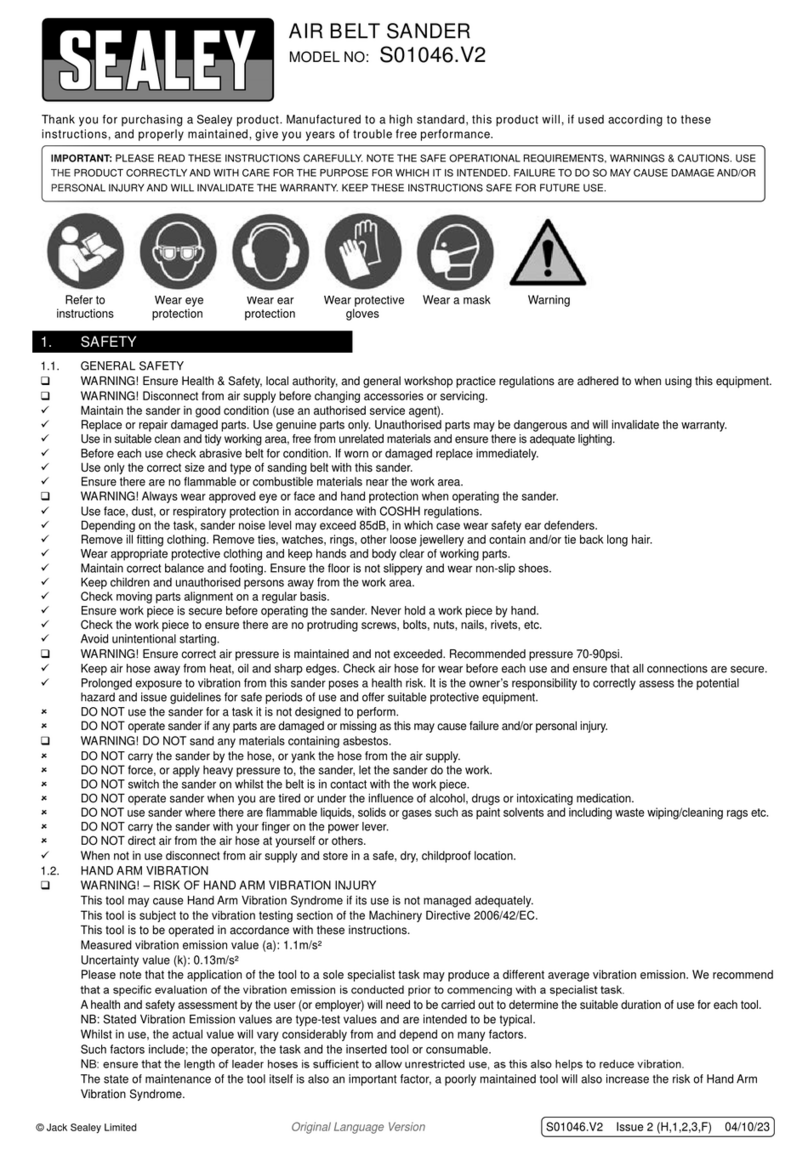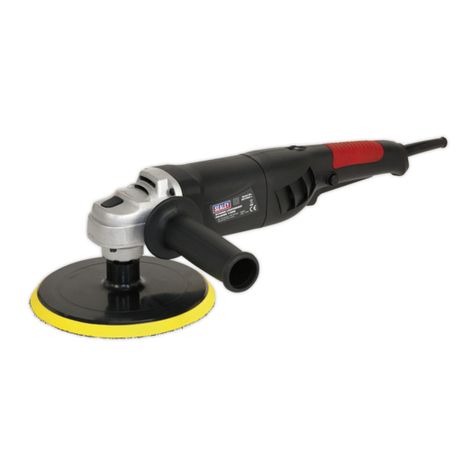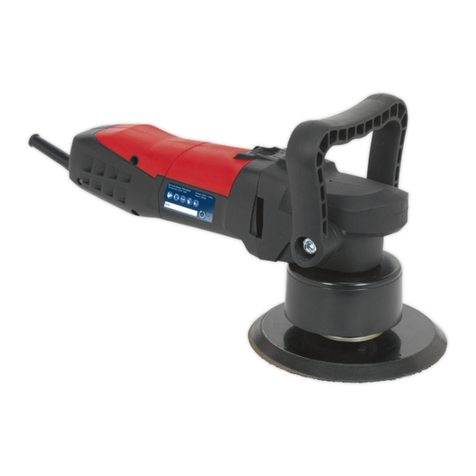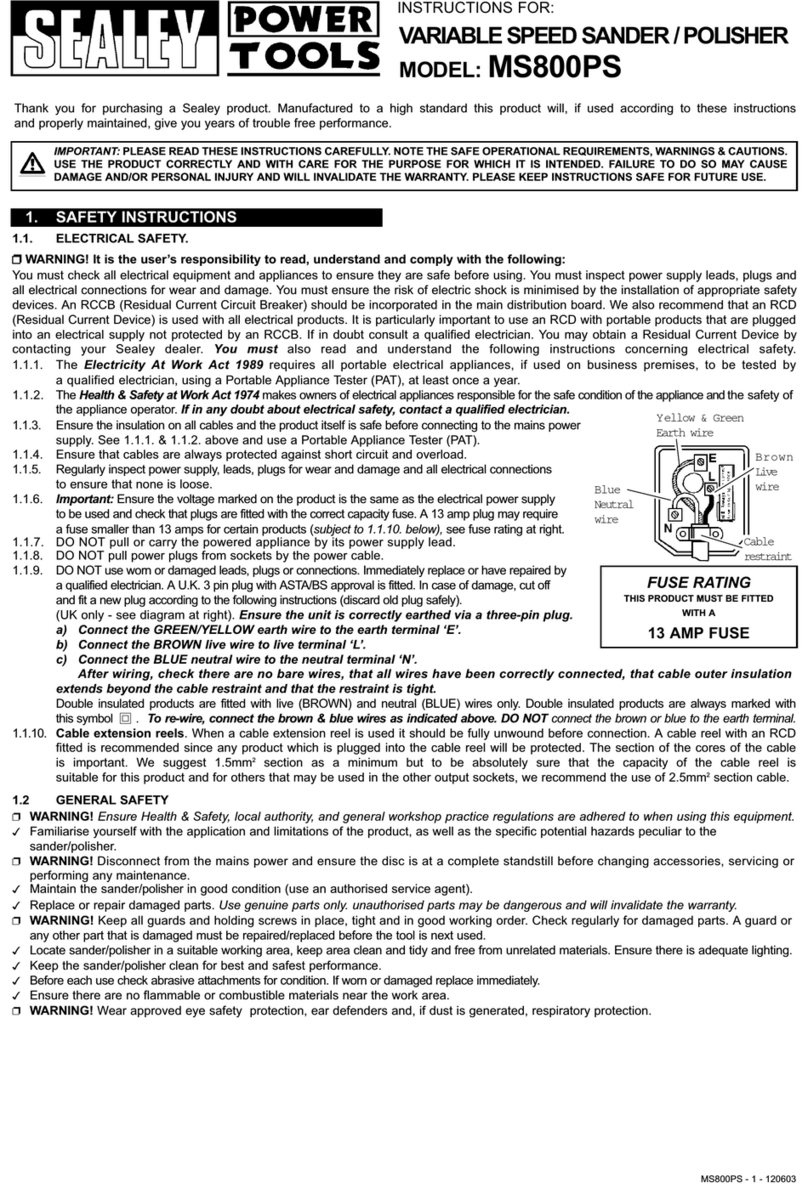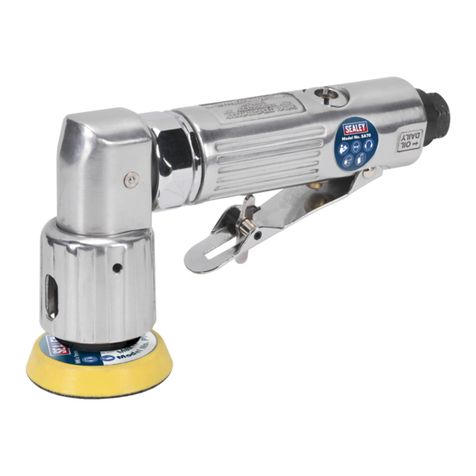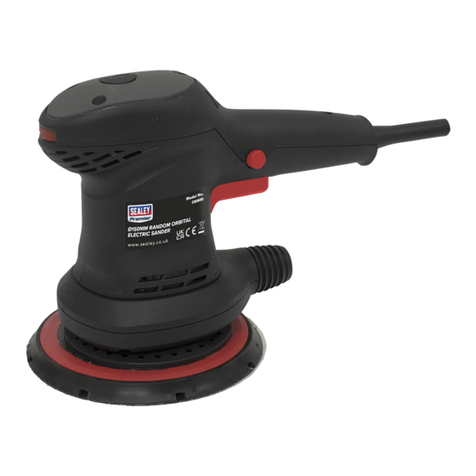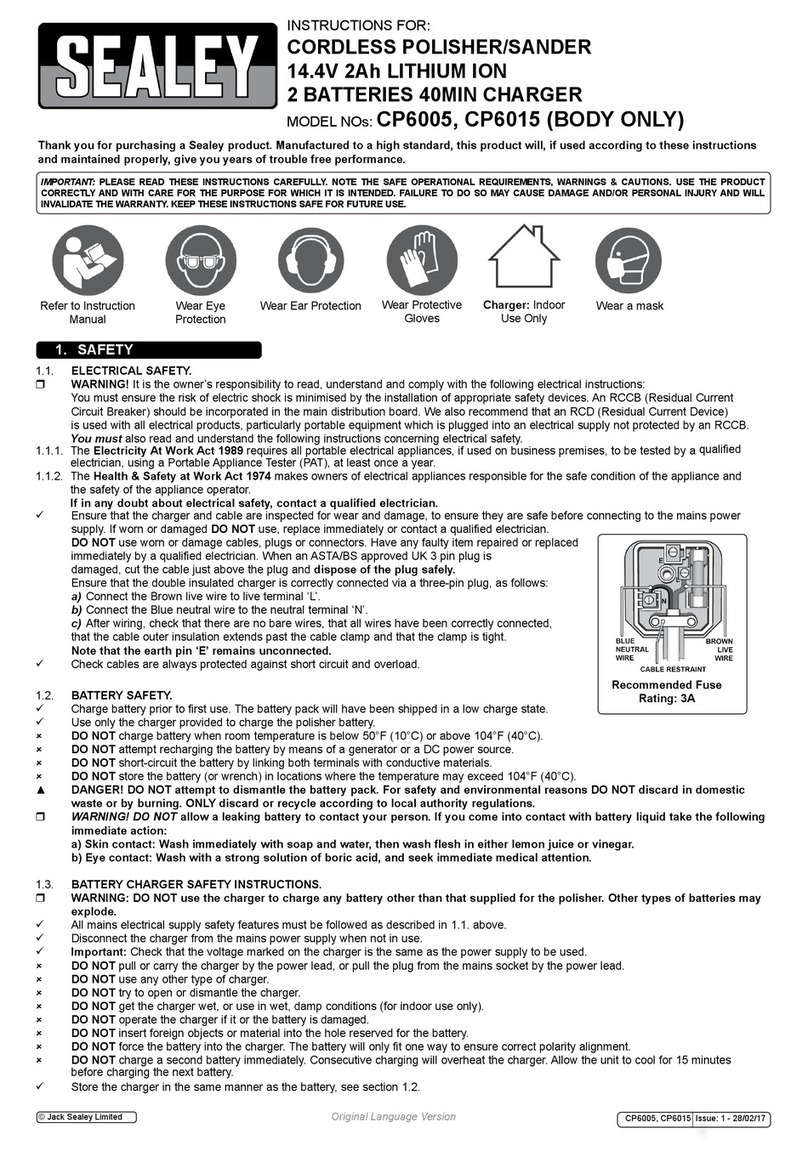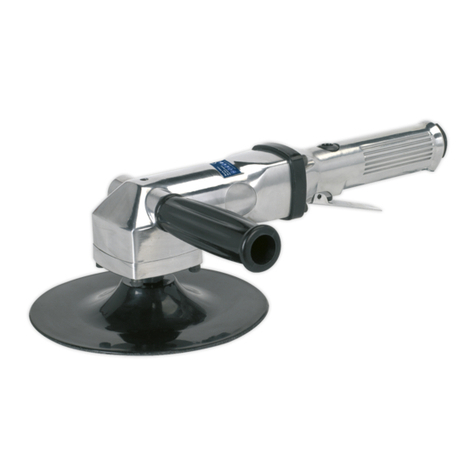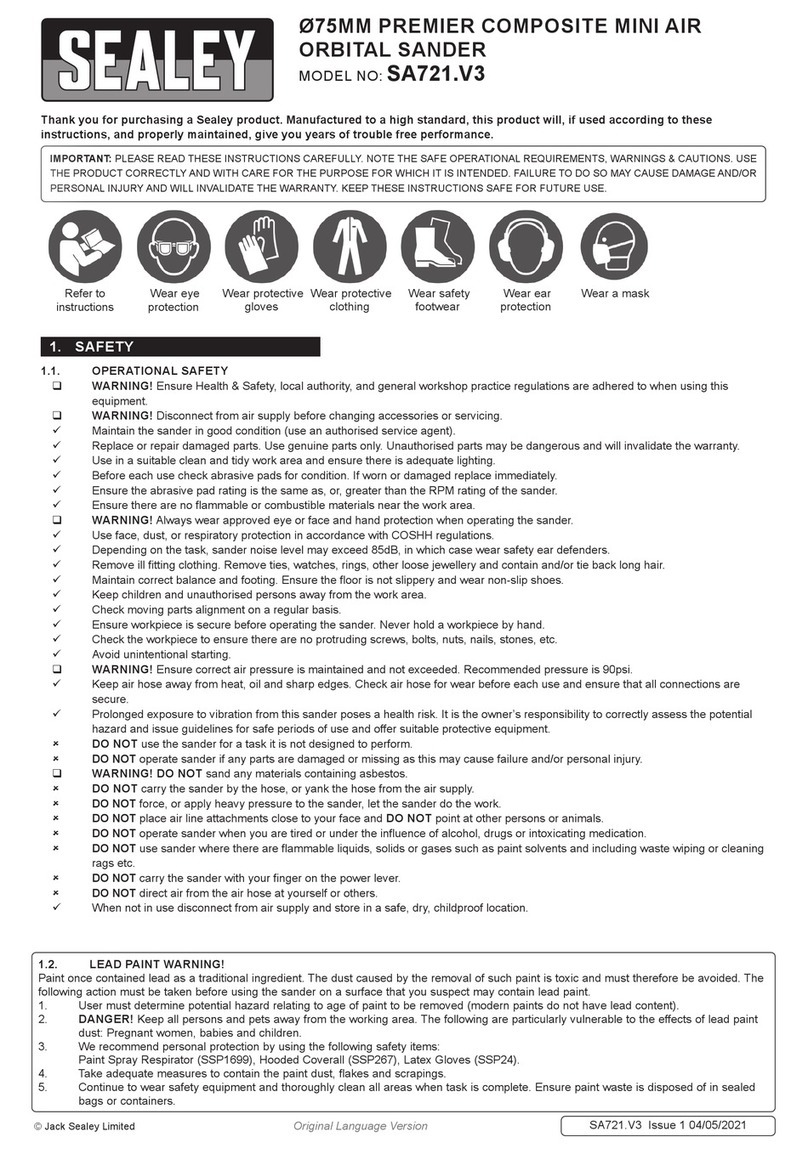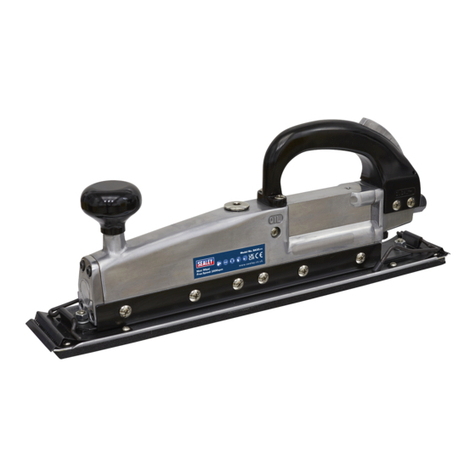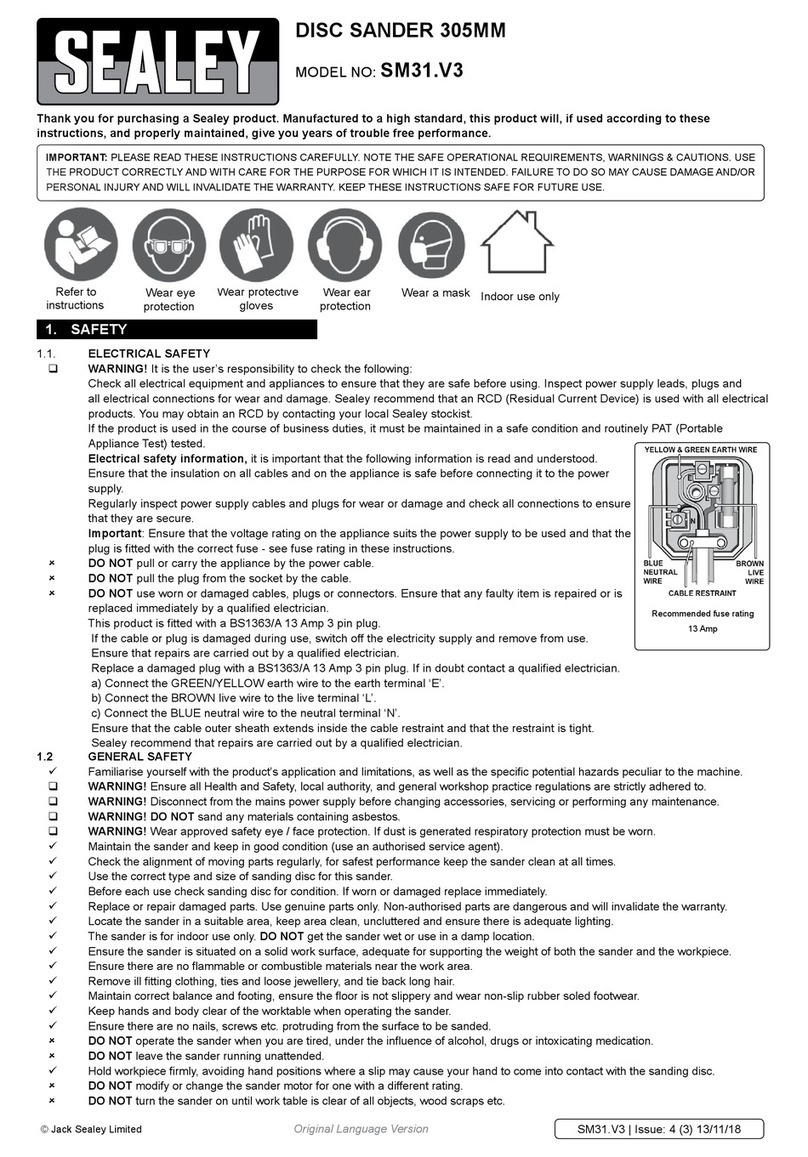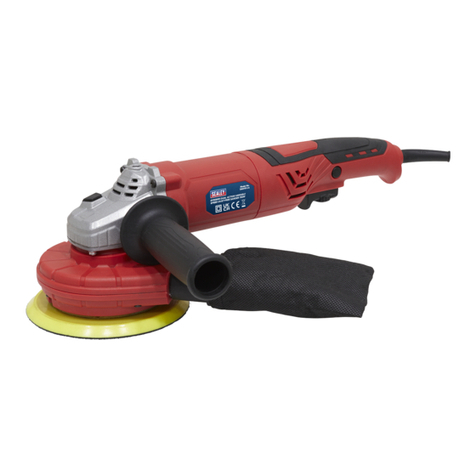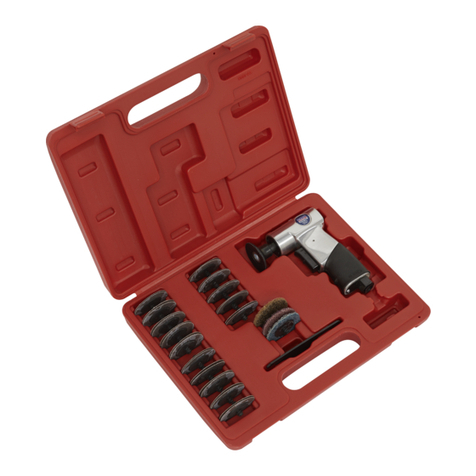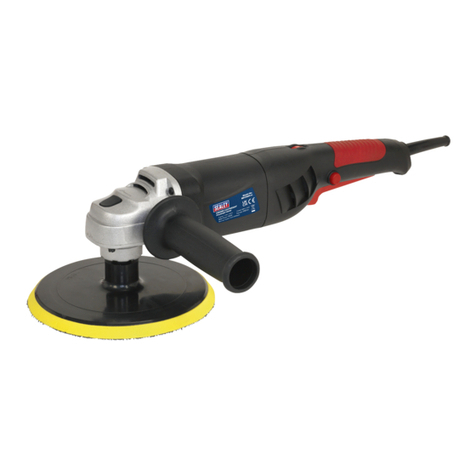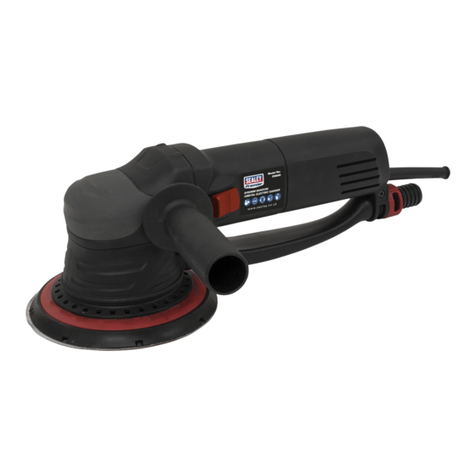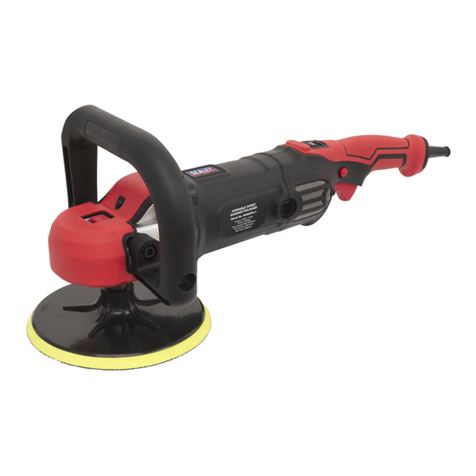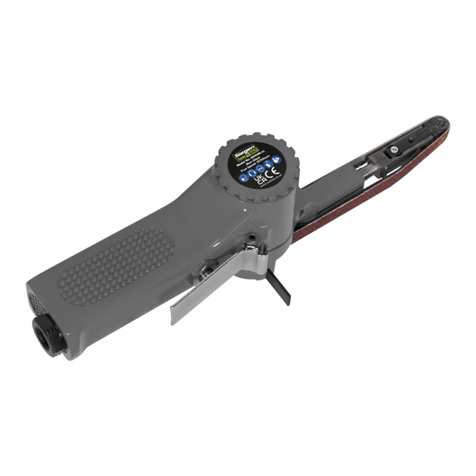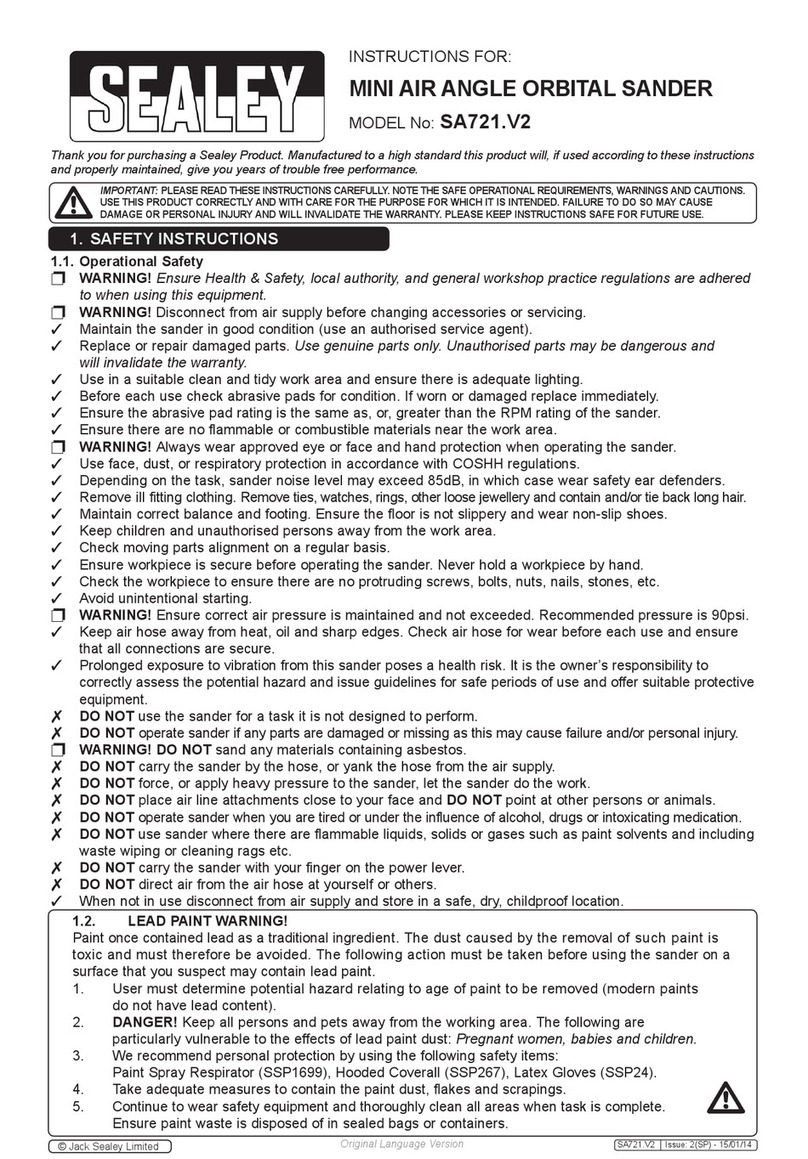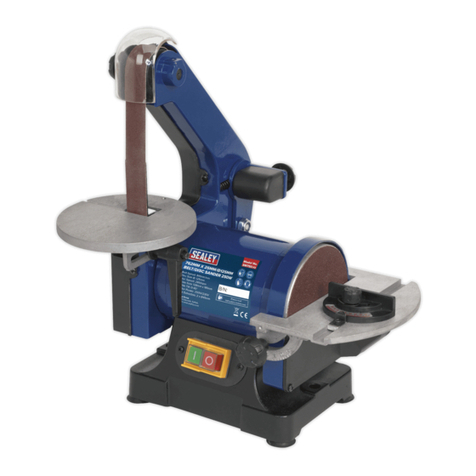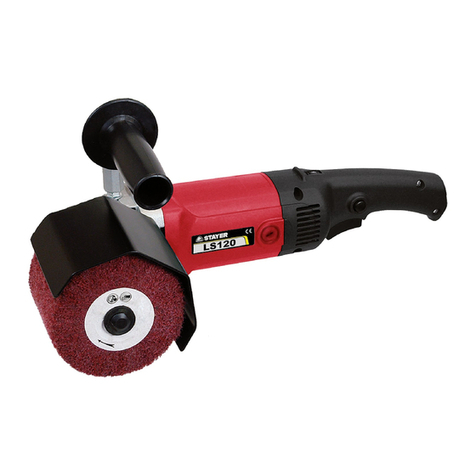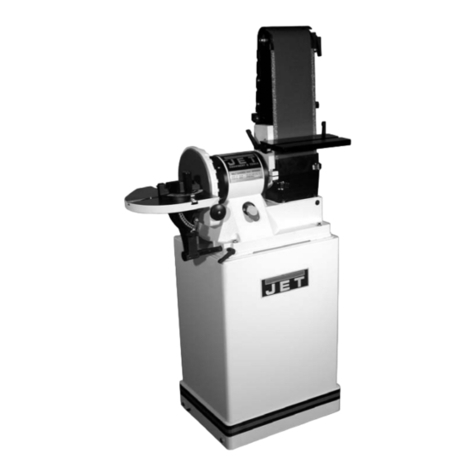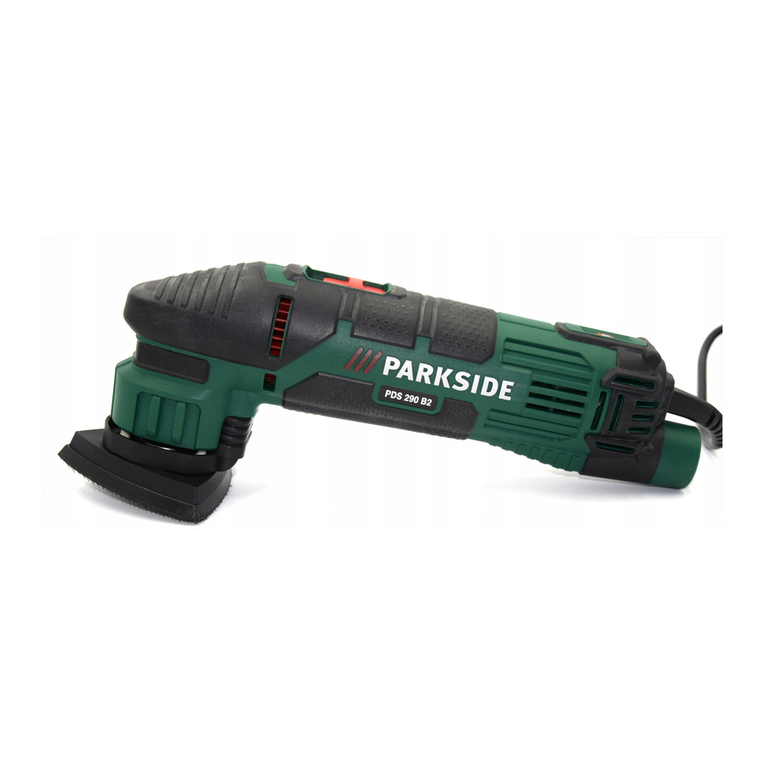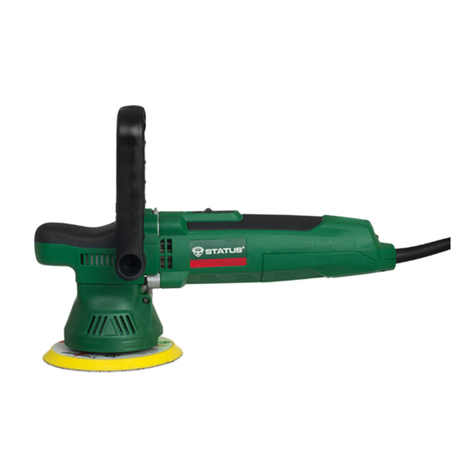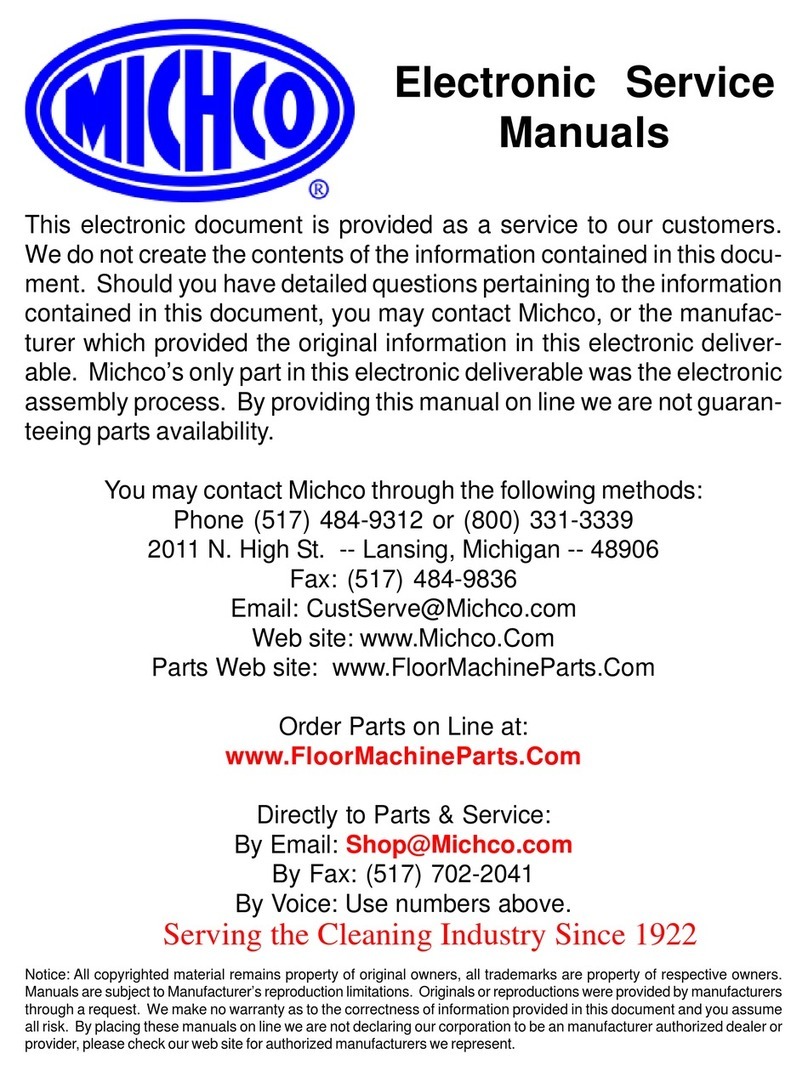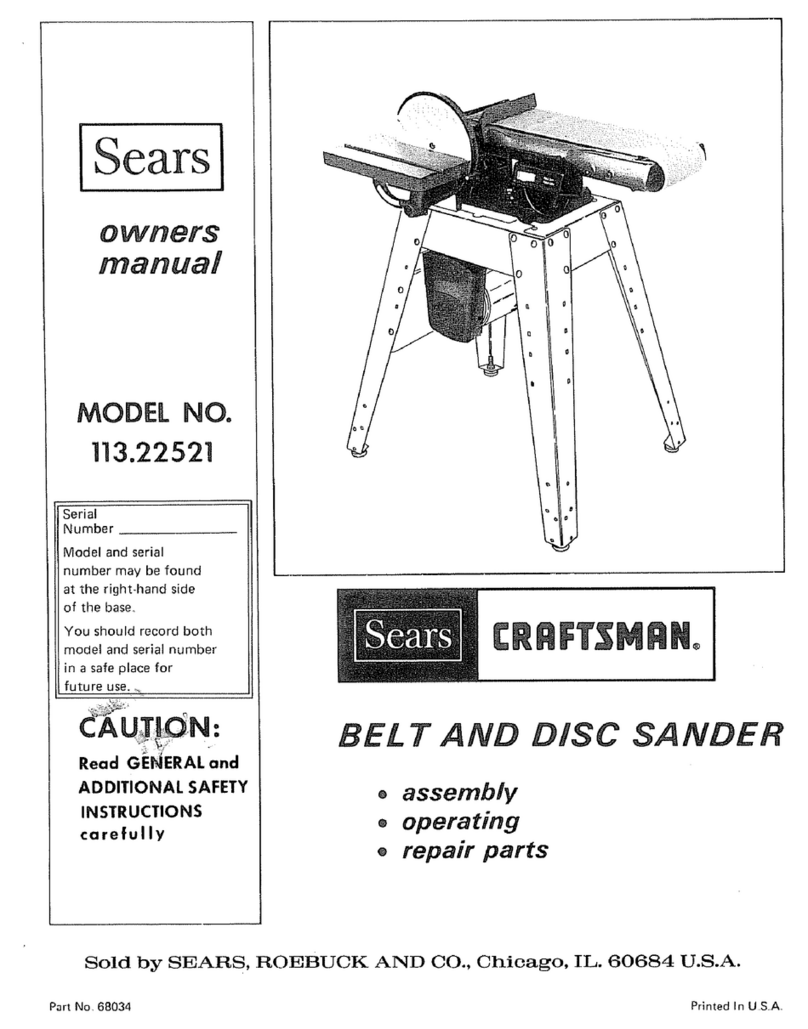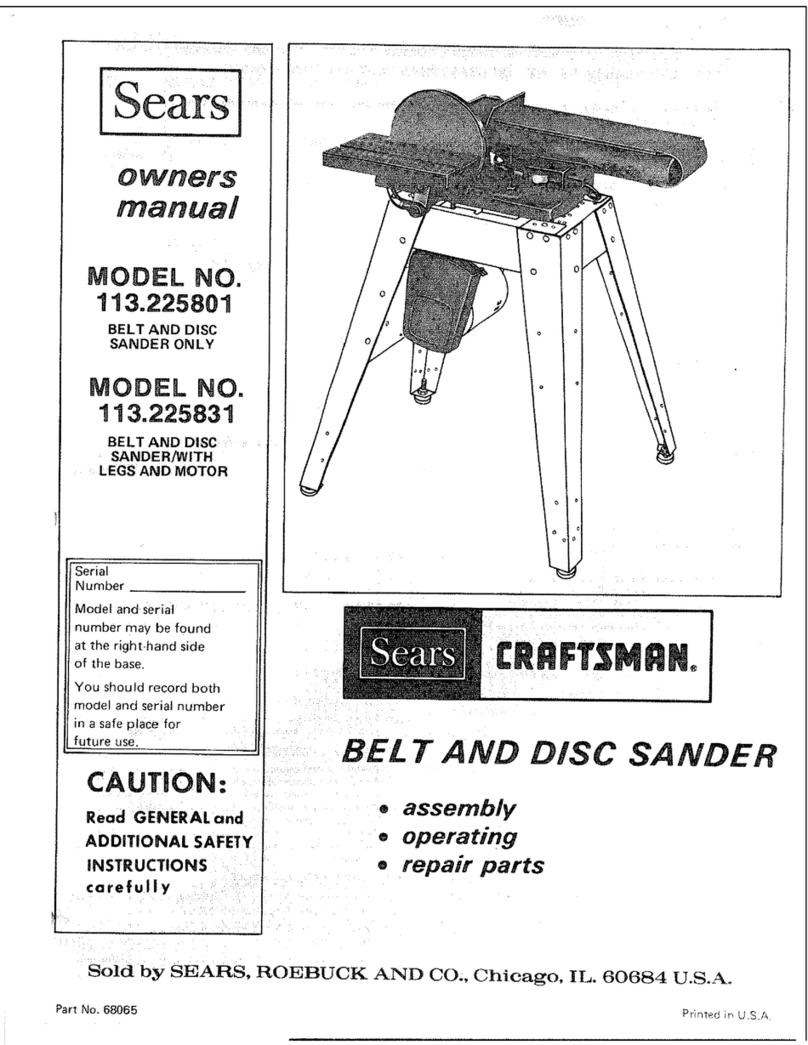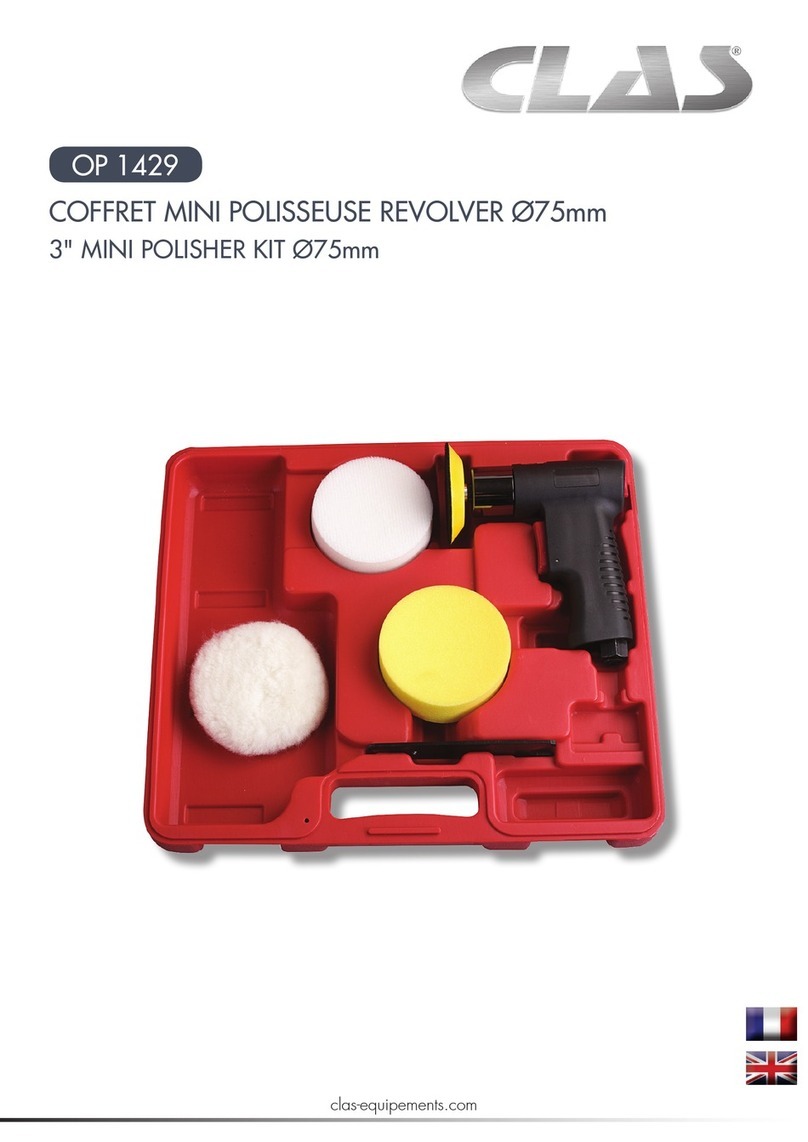
© Jack Sealey Limited Original Language Version DAS151PS Issue:1 28/06/23
WORK AREA SAFETY
9Keep work area clean and well lit. Cluttered or dark areas invite accidents.
8DO NOT operate power tools in explosive atmospheres, such as in the presence of ammable liquids, gases or dust. Power tools
create sparks which may ignite the dust or fumes.
9Keep children and bystanders away while operating a power tool. Distractions can cause you to lose control.
1.3. PERSONAL SAFETY
9Stay alert, watch what you are doing and use common sense when operating a power tool. DO NOT use a power tool while you are
tired or under the inuence of drugs, alcohol or medication. A moment of inattention while operating power tools may result in serious
personal injury.
9Keep handles and grasping surfaces dry, clean and free from oil and grease. Slippery handles and grasping surfaces do not allow for
safe handling and control of the tool in unexpected situation.
9 Use personal protective equipment. Always wear eye protection. Protective equipment such as dust mask, non-skid safety shoes,
hard hat or hearing protection use for appropriate conditions will reduce personal injuries. Prevent unintentional starting. Ensure the
switch is in the o position before connecting to power source and/or battery pack, picking up or carrying the tool. Carrying power tools
with your ngers on the switch or energising power tools that have the switch on invites accidents. Remove any adjusting key or
wrench before turning the power tool on. A wrench or a key left attached to a rotating part of the power tool may result in personal
injury.
9If devices are provided for the connection of dust extraction and collection facilities, ensure these are connected and properly used.
Use of dust collection can reduce dust-related hazards.
8DO NOT let familiarity gained from frequent use of tools allow you to become complacent and ignore tool safety principles. A careless
action can cause severe injury within a fraction of a second.
9 Remove any adjusting key or wrench before turning the power tool on.
8DO NOT overreach. Keep proper footing and balance at all times. This enables better control of the power tool in unexpected
situations.
9Dress properly. DO NOT wear loose clothing or jewellery. Keep your hair, clothing and gloves away from moving parts. Loose clothes,
jewellery or long hair can be caught in moving parts.
9Keep bystanders a safe distance away from work area. Anyone entering the work area must wear personal protective equipment.
9Position the power cord clear of the spinning accessory.
9Never lay the power tool down until the accessory has come to a complete stop.
8DO NOT run the power tool while carrying it at your side.
9Regularly clean the power tool’s air vents.
9If devices are provided for the connection of dust extraction and collection facilities, ensure these are connected and properly used.
8DO NOT operate the power tool near ammable materials.
8DO NOT use accessories that require liquid coolants.
1.4. KICKBACK AND RELATED WARNINGS
9Maintain a rm grip on the power tool and position your body and arm to allow you to resist kickback forces. Always use the auxiliary
handle, if provided, for maximum control over kick back or torque reaction during start-up.
8Never place your hand near a rotating accessory.
8DO NOT position your body in the area where the power tool will move if kickback occurs.
9 Use special care when working corners, sharp edges etc. Avoid bouncing and snagging the accessory.
1.5. POWER TOOL USE AND CARE
8DO NOT force the power tool. Use the correct power tool for your application. The correct power tool will do the job better and safer
at the rate for which it was designed.
8DO NOT use the power tool if the switch does not turn it on and o. Any power tool that cannot be controlled with the switch is
dangerous and must be repaired.
WARNING! Disconnect the plug from the mains supply before making any adjustments, changing accessories, or storage.
9Store idle power tools out of the reach of children and do not allow persons unfamiliar with the power tool or these instructions to
operate the power tool. Power tools are dangerous in the hands of untrained users.
9 Maintain power tools. Check for misalignment or binding of moving parts, breakage of parts and any other condition that may aect
the power tool’s operation. If damaged, have the power tool repaired before use. Many accidents are caused by poorly maintained
power tools.
9 Use the power tool, accessories and tool bits etc. in accordance with these instructions, taking into account the working conditions
and the work to be performed. Use of the power tool for operations dierent from those intended could result in a hazardous
situation.
1.6. SERVICE
9 Have your power tool serviced by a qualied repair person using only identical replacement parts. This will ensure that the safety of
the power tool is maintained. Unauthorised parts may be dangerous and will invalidate the warranty.
1.7. SPECIFIC SANDER SAFETY
WARNING! Disconnect from mains supply and ensure that the pad is at a complete standstill before changing accessories, servicing
or performing any maintenance.
WARNING! Keep all guards and holding screws in place, tight and in good working order.
8DO NOT use excessively oversized sanding disc paper. Follow manufacturer’s recommendations, when selecting sanding discs.
9 Check regularly for damaged parts. A guard or any other part that is damaged must be repaired/replaced before the sander is next
used.
9Keep the sander clean for best and safest performance.
9 Before each use check all attachments for condition. If worn or damaged replace immediately.
8DO NOT switch the sander on until the head is in contact with the panel and switch the unit o before removing the head from the
panel.
8DO NOT get the sander wet or use in damp or wet locations or areas where there is condensation.
8DO NOT allow untrained persons to operate the sander.
9 When not in use, unplug from the mains power supply and store in a safe, dry, childproof area.
LEAD PAINT WARNING!
Paint once contained lead as a traditional ingredient. The dust from the removal of such paint is toxic if inhaled or ingested and must,
therefore, be avoided. The following action must be taken before using the sander on a surface that you suspect may have contained
lead in the paint.
